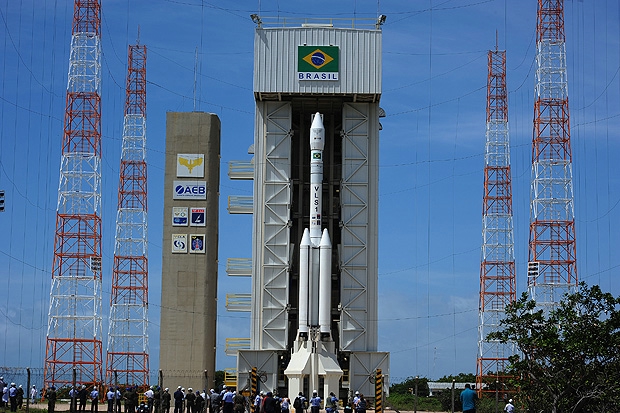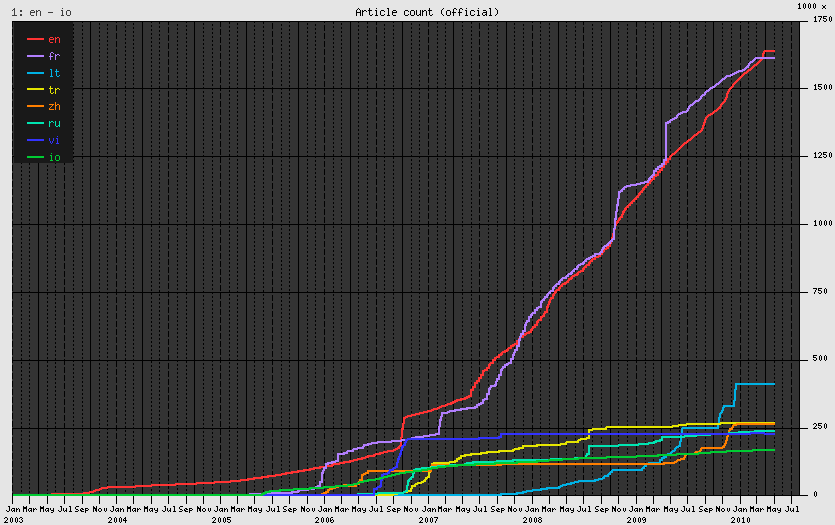|
Gamella Language
Gamela (Gamella, Acobu, Barbados) Curinsi or Acobu, is an unclassified and extinct language of the Maranhão region of Northeastern Brazil. It was originally spoken along the Itapecuru River, Turiaçu River, and Pindaré River, with ethnic descendants reported to be living in Cabo and Vianna in Maranhão State. The Gamela today speak Xavante and Portuguese. Kaufman (1994) said that 'only Greenberg dares to classify this language', due to the lack of data on it. This is the Gamela language of Viana for which 19 words are recorded in Nimuendajú (1937:68). Other varieties Below are other extinct varieties, many of which have no data, that may have been related to Gamela. *Arañí - once spoken between the Parnaíba River and Itapecuru River (unattested) *Puti (Poti) - once spoken at the mouth of the Poti River (unattested) *Anapurú - once spoken on the right bank of the Parnaíba River (unattested) *Uruati - extinct language from the mouth of the Munim River, Maranhão *Curu ... [...More Info...] [...Related Items...] OR: [Wikipedia] [Google] [Baidu] |
Maranhão
Maranhão () is a States of Brazil, state in Brazil. Located in the country's Northeast Region, Brazil, Northeast Region, it has a population of about 7 million and an area of and it is divided into 217 municipalities. Clockwise from north, it borders on the Atlantic Ocean for 2,243 km and the states of Piauí, Tocantins and Pará. The people of Maranhão have a distinctive accent within the common Northeastern Brazilian dialect. Maranhão is described in literary works such as ''Canção do exílio, Exile Song'' by Gonçalves Dias and ''Casa de Pensão'' by Aluísio Azevedo. The dunes of Lençóis Maranhenses National Park, Lençóis are an important area of environmental preservation. Also of interest is the state capital of São Luís, Maranhão, São Luís, which is a UNESCO World Heritage Site. Another important conservation area is the Parnaíba River delta, between the states of Maranhão and Piauí, with its lagoons, desert dunes and deserted beaches or islands, suc ... [...More Info...] [...Related Items...] OR: [Wikipedia] [Google] [Baidu] |
Parnaíba River
The Parnaíba River ( ) is a river in Brazil, which forms the border between the states of Maranhão and Piauí. Its main course is long and the Parnaíba River Basin covers .Ramos, T.P.A.; Ramos, R.T.C.; and Ramos, S.A.Q.A. (2014). Ichthyofauna of the Parnaíba river Basin, Northeastern Brazil.' Biota Neotrop. 14(1). The Parnaíba River rises in the Chapada das Mangabeiras range, and flows northeastward to empty into the Atlantic Ocean, being the longest river entirely located within Brazil's Northeast Region. The middle and upper regions of this river are separated by the Boa Esperança Hydroelectric Power Plant dam, but is otherwise navigable. Ecology The fish species richness in the Parnaíba River Basin has traditionally been considered impoverished, but this has been disproven by recent surveys, which have recorded about 140 native species (including several that remain undescribed) and about 40% of these are endemic. One of the basin endemics is the freshwater sting ... [...More Info...] [...Related Items...] OR: [Wikipedia] [Google] [Baidu] |
Indigenous Languages Of Northeastern Brazil
Indigenous may refer to: *Indigenous peoples *Indigenous (ecology), presence in a region as the result of only natural processes, with no human intervention *Indigenous (band), an American blues-rock band *Indigenous (horse), a Hong Kong racehorse * ''Indigenous'' (film), Australian, 2016 See also *Indigenous Australians *Indigenous language *Indigenous peoples in Canada *Indigenous religion *Missing and Murdered Indigenous Women Missing and Murdered Indigenous Women are instances of violence against Indigenous women in Canada and the United States, notably those in the First Nations in Canada and Native American communities, but also amongst other Indigenous peoples s ... * Native (other) * * {{disambiguation ... [...More Info...] [...Related Items...] OR: [Wikipedia] [Google] [Baidu] |
Wiktionary
Wiktionary (, ; , ; rhyming with "dictionary") is a multilingual, web-based project to create a free content dictionary of terms (including words, phrases, proverbs, linguistic reconstructions, etc.) in all natural languages and in a number of artificial languages. These entries may contain definitions, images for illustration, pronunciations, etymologies, inflections, usage examples, quotations, related terms, and translations of terms into other languages, among other features. It is collaboratively edited via a wiki. Its name is a portmanteau of the words ''wiki'' and ''dictionary''. It is available in languages and in Simple English. Like its sister project Wikipedia, Wiktionary is run by the Wikimedia Foundation, and is written collaboratively by volunteers, dubbed "Wiktionarians". Its wiki software, MediaWiki, allows almost anyone with access to the website to create and edit entries. Because Wiktionary is not limited by print space considerations, most of Wiktiona ... [...More Info...] [...Related Items...] OR: [Wikipedia] [Google] [Baidu] |
Timbira Language
Timbira is a dialect continuum of the Northern Jê language group of the Jê languages ̣( Macro-Jê) spoken in Brazil. The various dialects are distinct enough to sometimes be considered separate languages. The principal varieties, Krahô Laurie Bauer, 2007, ''The Linguistics Student’s Handbook'', Edinburgh (Craó), and Canela (Kanela), have 2000 speakers apiece, few of whom speak Portuguese. Pará Gavião has 600–700 speakers. Krẽje, however, is nearly extinct, with only 30 speakers in 1995. Timibira has been intensive contact with various Tupi-Guarani languages of the lower Tocantins- Mearim area, such as Guajajára, Tembé, Guajá, and Urubú-Ka'apór. Ararandewára, Turiwára, Tupinamba, and Nheengatu have also been spoken in the area. Some of people in the area are also remembers of Anambé and Amanajé. Varieties Linguistic varieties of Timbira include: * Canela (subdivided into Apànjêkra and Mẽmõrtũmre (a.k.a. Ràmkôkãmẽkra)), 2,500 speaker ... [...More Info...] [...Related Items...] OR: [Wikipedia] [Google] [Baidu] |
Tupi Language
Old Tupi, Ancient Tupi or Classical Tupi () is a classical Tupian language which was spoken by the indigenous Tupi people of Brazil, mostly those who inhabited coastal regions in South and Southeast Brazil. In the words of Brazilian tupinologist Eduardo Navarro, "it is the classical indigenous language of Brazil, and the one which had the utmost importance to the cultural and spiritual formation of the country". Old Tupi belongs to the Tupi–Guarani language family, and has a written history spanning the 16th, 17th, and early 18th centuries. In the early colonial period, Tupi was used as a ''lingua franca'' throughout Brazil by Europeans and Amerindians, and had literary usage, but it was later suppressed almost to extinction. Today, its sole living descendant is the Nheengatu language. As the most important native language of Brazil, it is the origin of most city names of indigenous origin ( Pindamonhangaba, Ubatuba, Botucatu, Jacareí). It also names several plant ... [...More Info...] [...Related Items...] OR: [Wikipedia] [Google] [Baidu] |
Piauí
Piauí ( ) is one of the states of Brazil, located in the country's Northeast Region, Brazil, Northeast Region. The state has 1.6% of the Brazilian population and produces 0.7% of the Brazilian GDP. Piauí has the shortest coastline of any coastal Brazilian state at 66 km (41 mi), and the capital, Teresina, is the only state capital in the northeast to be located inland. The reason for this is, unlike the rest of the area, Piauí was first colonised inland and slowly expanded towards the ocean, rather than the other way around. In the southeast of the state, the National Park of Serra da Capivara National Park, Serra da Capivara is a UNESCO World Heritage Site. The park has more than 400 archaeological sites and the largest concentration of rock art, rock paintings in the world, in a landscape dominated by canyons and caatinga. History The state has many notable archaeological sites, including Serra de Capivara National Park and Sete Cidades National Park, which are ... [...More Info...] [...Related Items...] OR: [Wikipedia] [Google] [Baidu] |
Longá River
The Longá River is a river of Piauí state in northeastern Brazil. See also *List of rivers of Piauí This list of rivers in the Brazilian State of Piauí is arranged by drainage basin, with respective tributaries indented under each larger stream's name and ordered from downstream to upstream. All rivers in Piauí drain to the Atlantic Ocean. B ... ReferencesBrazilian Ministry of Transport Rivers of Piauí {{Piauí-river-stub ... [...More Info...] [...Related Items...] OR: [Wikipedia] [Google] [Baidu] |
Munim River
The Munim River () is a river of Maranhão state in northeastern Brazil. It flows north for about before emptying into the Baía de São José to the south of the state capital. The river has suffered from agricultural pollution and from illegal dredging of sand and gravel for use in construction. Basin The Munim River basin has an area of , covering 4.79% of the state of Maranhão, in the extreme east of the state. The basin includes parts of 23 municipalities of Maranhão, of which 7 are completely contained within the basin: Afonso Cunha, Cachoeira Grande, Chapadinha, Mata Roma, Nina Rodrigues, Presidente Vargas and São Benedito do Rio Preto. Course The Munim River is formed in Afonso Cunha by the confluence of the Riacho da Barriguda and the Riacho do Bio. Its sources are in the Tabuleiros of the Barreiras formation, to the northeast of the municipality of Caxias. The sources rise in the municipalities of Aldeias Altas (Munim River), Buriti ( Preto River) and Co ... [...More Info...] [...Related Items...] OR: [Wikipedia] [Google] [Baidu] |
Poti River
Poti River is a river in Brazil, a tributary of the Parnaíba River. The city of Teresina, state capital of Piauí, was formerly named ''Vila Nova do Poti'' after the river. It flows through the municipality of Parambu in the state of Ceará Ceará (, ) is one of the 26 states of Brazil, located in the Northeast Region, Brazil, northeastern part of the country, on the Atlantic Ocean, Atlantic coast. It is the List of Brazilian states by population, eighth-largest Brazilian State by .... Rivers of Piauí Rivers of Ceará {{Ceará-river-stub ... [...More Info...] [...Related Items...] OR: [Wikipedia] [Google] [Baidu] |
Curt Nimuendajú
Curt Unckel Nimuendajú (born Curt Unckel; 18 April 1883 – 10 December 1945) was a German-Brazilian people, Brazilian ethnologist, anthropologist, and writer. His works are fundamental for the understanding of the religion and cosmology of some native Brazilian Indians, especially the Guaraní people. He received the surname "Nimuendajú" from the Apapocuva subgroup of the Guaraní people, meaning "the one who made himself a home", one year after living among them. Upon taking Brazilian citizenship in 1922, he officially added the Nimuendajú as one of his surnames. On his obituary, his Brazilian-German colleague Herbert Baldus called him "perhaps the greatest ''Indianista'' of all time". Life and work Nimuendajú was born in Wagnergasse 31, Jena, Germany in 1883 and he lost either one of or both his parents in his childhood. From an early age, he dreamed of living among a 'primitive people'. Still in school, together with other students they organized an 'Indian gang' to go hu ... [...More Info...] [...Related Items...] OR: [Wikipedia] [Google] [Baidu] |



